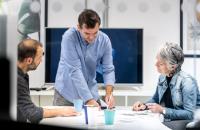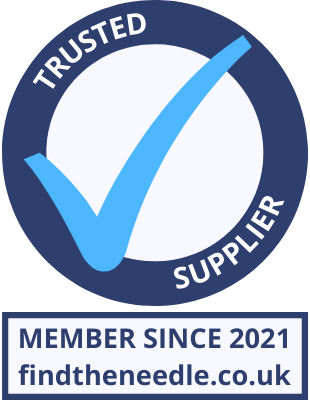 Add My Company
Add My Company
Sign In

HOW CAN PRODUCT DESIGN HELP YOUR BUSINESS:
7 THINGS YOU SHOULD KNOW
Product design can make or break a company — and if you want to make sure that you fall into the first category, you’re going to want to make sure you know how it works. Based on our experiences with clients over the last two decades, we’re here to answer the seven most common queries to help you understand how product design can help your business.
If you’ve ever wondered what the difference is between a product designer and a UX designer, or whether anyone trained in CAD can design products, make sure you stick around.
1. WHAT IS PRODUCT DESIGN?
Put simply, product design (sometimes referred to as industrial design) is the process of developing products that can be manufactured at scale. But what really sets it apart is the focus on users. Product design takes a holistic view of the problem a product is solving to create the most practical, useful solution. As a result, it encompasses many aspects, including:
Human Psychology
Sculpture
Science and Engineering
Marketing
User study
Ergonomics
Materials science
Manufacturing process
Prototyping process
Analytical engineering skills
For instance, here at Flynn Product Design, we created a wireless webcam back in 2007 (a time when even wireless headphones were unheard of). These cameras took a spider-like shape to make them easy to place on any screen and desk wirelessly, and they also dealt with technical issues like RF interference for Wi-Fi. We didn’t just invent a new webcam design for the sake of it — we were solving the problem of cluttered desks, and without compromising webcam performance.
2. WHAT DOES A PRODUCT DESIGNER DO?
Product designers work on physical hardware development — meaning they design physical products for mass production, which users tend to interact with physically. This differs from the work of UX or digital product designers, who focus on non-tangible items like websites or apps. In a nutshell: They take real-world commercial problems and offer real-world commercial solutions.
Many people assume that the job of product designers is to create a plan and hand it over, but they can actually be involved at any stage of development — right up to production and packaging.
3. WHAT IS A TYPICAL PRODUCT DEVELOPMENT PROCESS?
The design process behind every product will look a little different, and every designer has their quirks and preferences. But generally speaking, a process involves the following ten stages:
Stop to think and observe
Define the problem concisely
Outline the core objective or solution
Create (and communicate) ideas
Test those ideas by prototyping
Cycle back to concept iterations if needed
Select and review solutions with stakeholders
Refine solutions for manufacturing
Assess first version of product
Continue to review the product for further iterations
In some cases, product designers may also assist with production engineering or the generation of marketing materials before a product is created.
4. WHAT IS A PRODUCT DESIGNER VS UX DESIGNER?
If you’re looking for a universal, clear-cut answer, you’re out of luck here. By our definition, product and industrial designers work on physical products, and could also work on digital interfaces if they wanted — while a UX designer wouldn’t work in physical product development. But not everyone would agree.
The US has always preferred the term “industrial designer” for the job we call a “product designer” here in the UK. Then came the advent of apps and UX design led by Silicon Valley, which breathed new light into the phrase “product design” across the Atlantic. For instance, Facebook has a Head of Product Design — but since Facebook is a digital platform, this title doesn’t match our definition of product design.
No wonder job forums related to product design are full of confused applicants!
Just as the earth’s magnetic poles shift over time, language changes. We’d favour terms like Digital Product Designer or App Designer for web-related colleagues, but we’re not holding our breath.
As you might imagine, sustainable product design focuses on reducing the environmental impact of the product life cycle — be that the design, manufacturing, or even the final use of the product. For example, we put the principles of sustainable product design to use when creating the TOPL reusable cup. While the idea of a reusable cup is now nothing new, we strived for perfection in our design to stop trillions of paper cups from ending up in landfill. We ended up creating a lockable anti-spill cup that is highly energy-efficient and keeps drinks warm for hours while being efficient and preventing burns. Sustainable design is a passion of ours, and we encourage anyone with a project in this sector to reach out — we’d love to collaborate.
6. WHAT TO AVOID WHEN HIRING A PRODUCT DESIGNER?
Every man and his dog can create CAD-based models. Do all of them make for great product designers? Absolutely not. Sometimes, companies might try to cut corners by going to university departments or other people who can use CAD but aren’t trained in product design. Some get lucky, but in the vast majority of cases, this leads to time and cash wasted. Again and again, clients come to us to “rescue a project” after they’ve been burned this way.
Why save 50% on hiring someone inexperienced if it costs you 1000% downstream for fixes and additional iterations? If a product designer doesn’t make it abundantly obvious that they have full-spectrum expertise, it’s best to stay away. Most inexperienced designers fall down in full-layered assembly design and manufacturing considerations.
However, you don’t always need to see exact sector experience in a designer’s portfolio — it’s the ability to boost your idea and deliver results that matter.
7. HOW CAN PRODUCT DESIGN HELP YOUR BUSINESS PERFORM BETTER?
A product design consultancy will help you review how well your brand and product fusion performs. They can also help you reinforce your brand and become design leaders, by definition, from investing in design. Ultimately, this results in you beating the competition, generating higher profits with market-disrupting products, and gaining wider critical acclaim from your products. In some cases, you may even be able to expand to new markets by opening up fresh product pathways.
Product design can also help you to reduce costs through a more efficient manufacturing philosophy or to reduce your carbon footprint through sustainable product design.
PUT THAT KNOWLEDGE INTO ACTION
As with many things, the more you know about product design, the more you realise there is more to discover. This is part of the reason we fell in love with Product Design. We’ve only skimmed the surface here, if you are a smart cookie, you understand now more than ever that the consumer demands design leadership from your brand. It is now more vital than ever to demonstrate your investing in your customers through investing in user led design.
For more information on HOW CAN PRODUCT DESIGN HELP YOUR BUSINESS: 7 THINGS YOU SHOULD KNOW talk to Flynn Product Design
Enquire Now
More Design Blogs
List your company on FindTheNeedle.

